Hakima Chaouchi
Contextual-Bandit Anomaly Detection for IoT Data in Distributed Hierarchical Edge Computing
Apr 15, 2020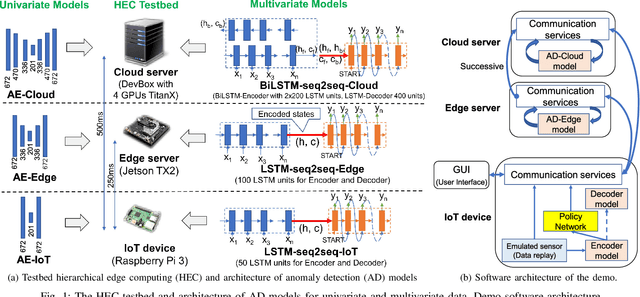
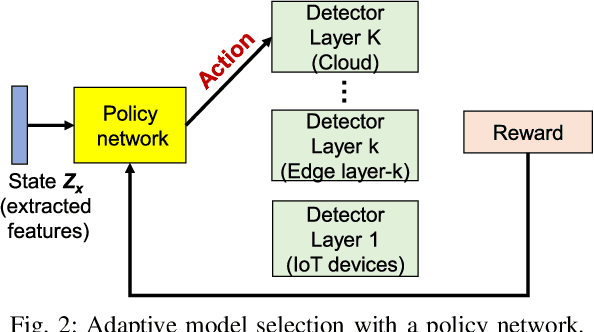
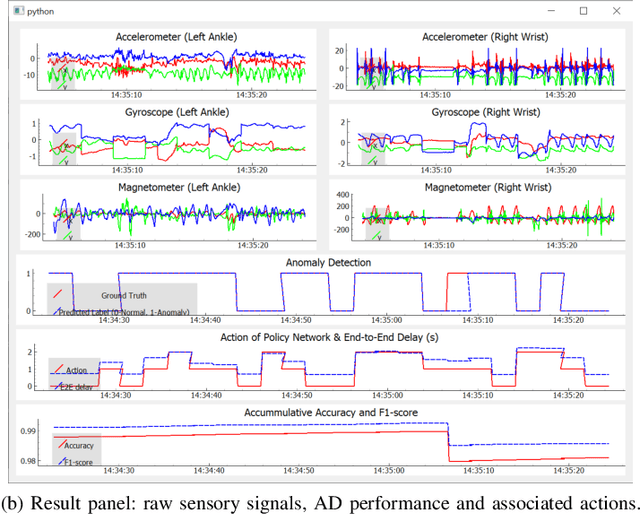

Abstract:Advances in deep neural networks (DNN) greatly bolster real-time detection of anomalous IoT data. However, IoT devices can hardly afford complex DNN models, and offloading anomaly detection tasks to the cloud incurs long delay. In this paper, we propose and build a demo for an adaptive anomaly detection approach for distributed hierarchical edge computing (HEC) systems to solve this problem, for both univariate and multivariate IoT data. First, we construct multiple anomaly detection DNN models with increasing complexity, and associate each model with a layer in HEC from bottom to top. Then, we design an adaptive scheme to select one of these models on the fly, based on the contextual information extracted from each input data. The model selection is formulated as a contextual bandit problem characterized by a single-step Markov decision process, and is solved using a reinforcement learning policy network. We build an HEC testbed, implement our proposed approach, and evaluate it using real IoT datasets. The demo shows that our proposed approach significantly reduces detection delay (e.g., by 71.4% for univariate dataset) without sacrificing accuracy, as compared to offloading detection tasks to the cloud. We also compare it with other baseline schemes and demonstrate that it achieves the best accuracy-delay tradeoff. Our demo is also available online: https://rebrand.ly/91a71
Adaptive Anomaly Detection for IoT Data in Hierarchical Edge Computing
Jan 10, 2020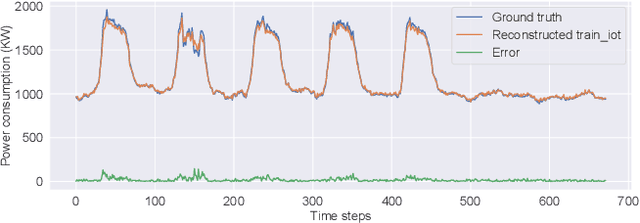

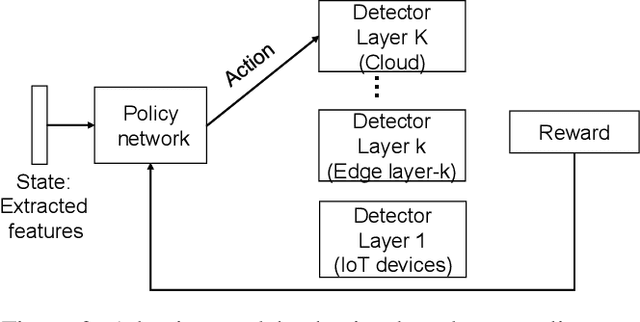

Abstract:Advances in deep neural networks (DNN) greatly bolster real-time detection of anomalous IoT data. However, IoT devices can barely afford complex DNN models due to limited computational power and energy supply. While one can offload anomaly detection tasks to the cloud, it incurs long delay and requires large bandwidth when thousands of IoT devices stream data to the cloud concurrently. In this paper, we propose an adaptive anomaly detection approach for hierarchical edge computing (HEC) systems to solve this problem. Specifically, we first construct three anomaly detection DNN models of increasing complexity, and associate them with the three layers of HEC from bottom to top, i.e., IoT devices, edge servers, and cloud. Then, we design an adaptive scheme to select one of the models based on the contextual information extracted from input data, to perform anomaly detection. The selection is formulated as a contextual bandit problem and is characterized by a single-step Markov decision process, with an objective of achieving high detection accuracy and low detection delay simultaneously. We evaluate our proposed approach using a real IoT dataset, and demonstrate that it reduces detection delay by 84% while maintaining almost the same accuracy as compared to offloading detection tasks to the cloud. In addition, our evaluation also shows that it outperforms other baseline schemes.
 Add to Chrome
Add to Chrome Add to Firefox
Add to Firefox Add to Edge
Add to Edge